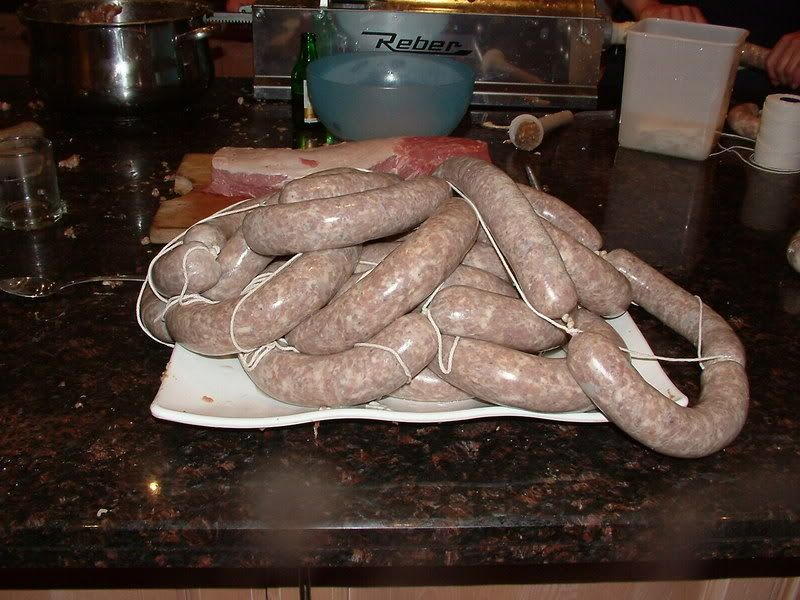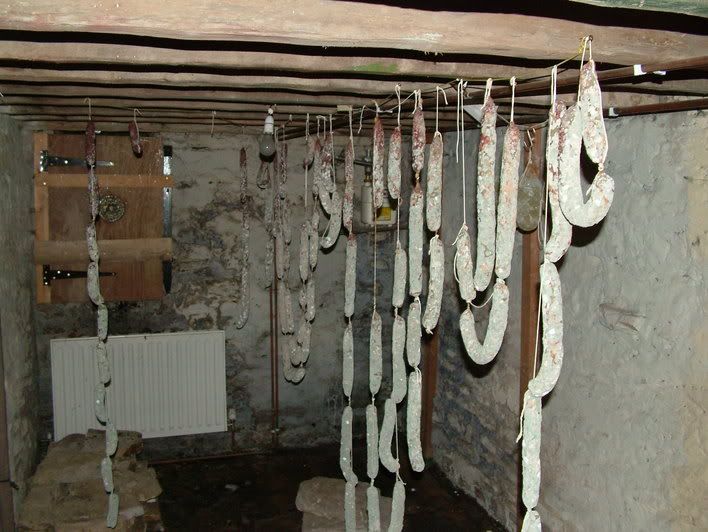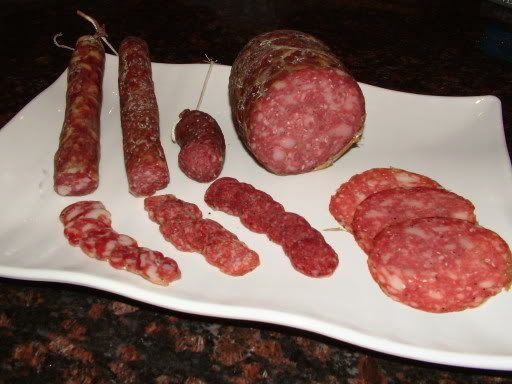From this

to this

to this

Franco




Platypus wrote:othmar,
I recently discarded a batch of salami because of mould.
I am happy to see white or green mould on them but this batch also started to develop light brown mould as well (the colour of cafe latte).
Was I right to bin them? Would you have kept them?
I did consider wiping them in vinegar to remove the mould but was not confident about their viability so chose the cautious route.

Platypus wrote:Thanks othmar,
The smell wasn't bad but they didn't smell like salami much either, there was just a hint of mouse! You know, that smell you get when the hamster cage needs cleaning
Anyway you have put my mind at rest that I did do the right thing.
Cheers
Platypus
Users browsing this forum: No registered users and 3 guests